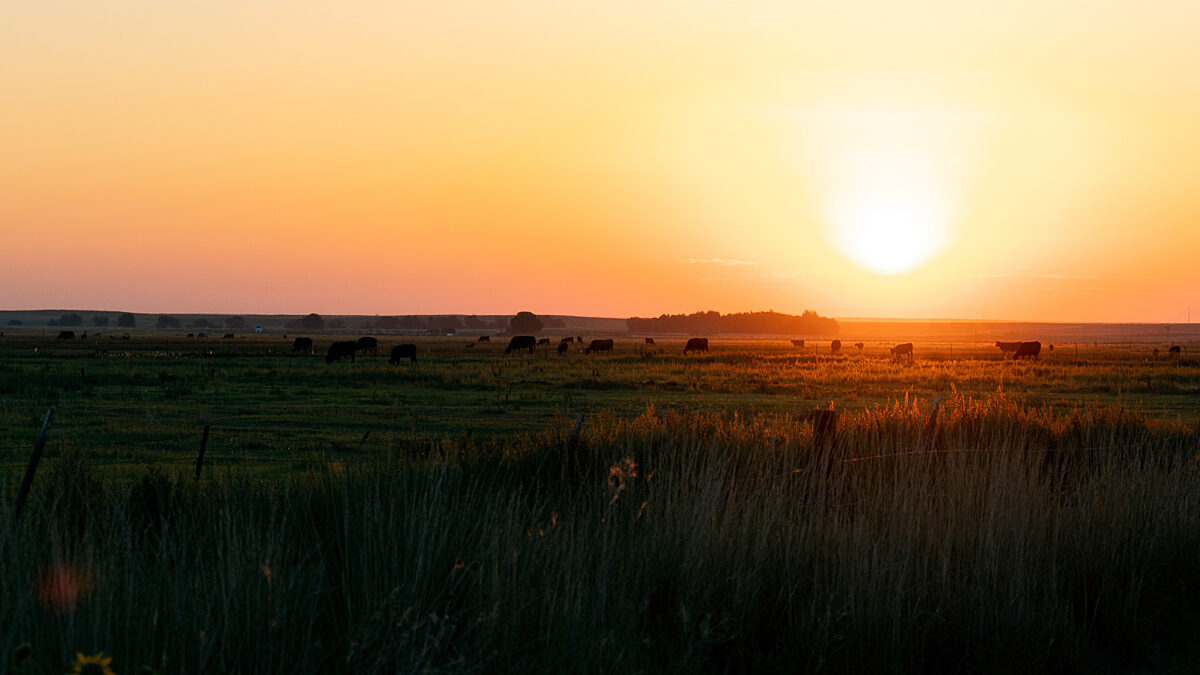Saving Daylight, But for Whom?
Kari Barbic
Director, Executive Communications

photo credit: Colorado Farm Bureau, Used with Permission
Kari Barbic
Director, Executive Communications
Ready or not, in a few short days, most of the country will leap forward into daylight saving time. As you stumble about in a semi-jetlagged state and reach for that extra cup of coffee, you might be tempted to grumble under your breath and blame farmers. While your frustration with this abrupt disruption to time itself is fair enough, blaming farmers is most certainly not.
The idea of springing forward did not begin with farmers. One might argue that farmers understand better than most people that you cannot control when the sun rises and sets, just as you can’t control the weather or the changing of the seasons.
A later sunset doesn’t change when cows need to be milked, when chickens are fed or when crops need to be harvested.
So where did the myth about saving daylight for farmers come from? Unclear. What is clear, however, is that agriculture rallied in opposition to imposing daylight saving time in 1919. And they won. The practice of saving daylight had been adopted in wartime as a way to save energy, but when peace prevailed, farmers called for a sunset on the practice. Daylight saving time rose again in World War II but wouldn’t become a permanent practice until 1966 when the Uniform Time Act was passed and signed into law. Every year since, farmers and the rest of the nation have learned to adapt to losing an hour. (Well, everyone except residents of Arizona, Hawaii, and the U.S. territories of American Samoa, Guam, the Northern Mariana Islands, Puerto Rico and the U.S. Virgin Islands, where standard time shines year-round, with an abundance of sunshine nonetheless.)
Most farmers are up well before the sun year-round. A later sunset doesn’t change when cows need to be milked, when chickens are fed or when crops need to be harvested. If you have pets or children at home, you know firsthand that you cannot just turn back time—or fast-forward for that matter. The same holds true on the farm. Take dairy farmers, for example. When daylight saving time begins, they must gradually adjust their cows to a new milking time over several days. What about crops, you might ask. Farmers lose out with cutting morning hours short here as well. As Michael Downing noted in his book “Spring Forward: The Annual Madness of Daylight Saving Time,” farmers who originally opposed the daylight shift said they lost an hour in getting their crops harvested and to market in time. Today, farmers in warmer regions rely on those cooler, early morning hours throughout the summer to harvest and beat the heat of late afternoon.
So why haven’t we done away with all this jumping back and forth with the clocks? Or didn’t we already? Well, almost but not quite. A couple states have attempted to sunset this practice for good, and the Senate passed the Sunshine Protection Act a couple years ago, which failed to gain traction in the House. Recent attempts like these would make daylight saving time permanent.
On the surface that sounds like endless summer, but remember, as any farmer will tell you, you cannot make the sun shine longer. A sacrifice must be made. And that sacrifice comes at sunrise, or the lack of a sunrise for a while anyway. If the whole country took on daylight saving time year-round, most Americans wouldn’t see daylight until well after 8:00 a.m. in January. For those who live on the edge of their time zones, like Michigan, that means sunrise after 9:00 a.m.
If that seems like a small price to pay for a 6:00 p.m. sunset in January, your doctor might have a second opinion. The American Academy of Sleep Medicine argues that standard time is better for your overall health and circadian rhythm, if a permanent time change is what you’re looking for.
In the meantime, when the clock strikes 2:00 a.m., Sunday, March 10, we will spring forward once again. While you cannot thank (or blame) a farmer for any extra daylight that follows, remember they will be out there working hard to grow the food, fiber and fuel we all need. They will be up before the sun and often long after, no matter what time the clock says, to ensure all our pantries remain stocked in all seasons.
Kari Barbic is a director of communications at the American Farm Bureau Federation.
Top Issues
VIEW ALL